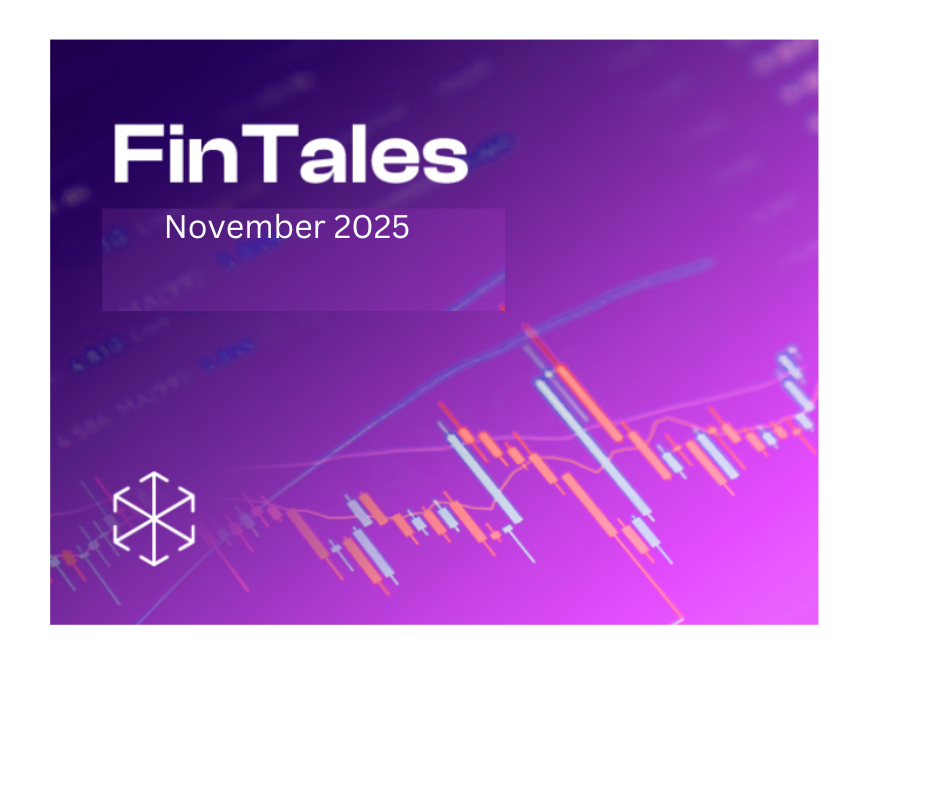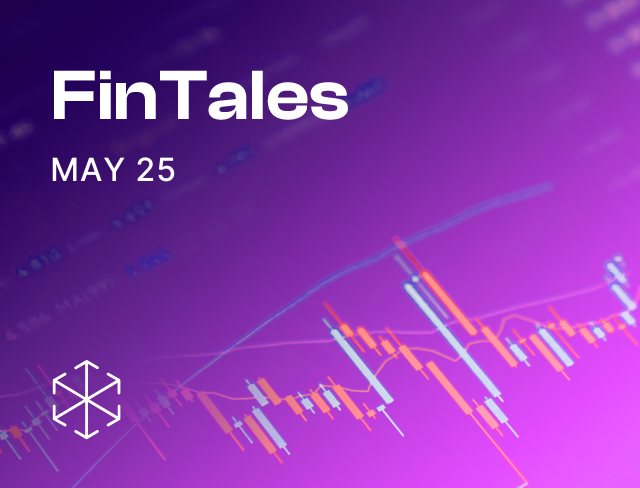Hello Reader,
The ancient Greeks believed the first divine beings – the sky, the earth, the seas – emerged from Chaos. For a while, the world was in order, but with each generation, it became more complex and conflict-ridden. Take, for instance, the succession wars between Uranus, Kronus, and Zeus. Kronus overthrew his father, Uranus, and was eventually dethroned by his son, Zeus. Zeus also battled new challengers to remain the ruler of the heavens. And the world continued to cycle between order and chaos.
UPI too was born in chaos. It was launched in August 2016. But its popularity exploded when 86% of the cash supply was demonetized in November 2016. Between 2016-17, several players like PhonePe, BHIM, Google Pay, and Paytm emerged. For a while, the competition was intense. The UPI market then consolidated into a duopoly, with PhonePe and Google Pay capturing 80% market share. A duopoly brings order, but it’s a risky order. To reduce concentration risks, the NPCI imposed a 30% market share cap on UPI apps in November 2020. By 1 January 2023, all UPI apps which exceeded 30% market share had to reduce volumes. Reports suggest the NPCI may extend this deadline. But if the deadline isn’t extended, chaos is on the horizon. Because market leaders may limit transactions by existing users or deboard existing users. The chaos isn’t just within UPI though. UPI dominates the Indian digital payments landscape, processing 64% of digital payments in the country. But the upcoming retail CBDC could challenge UPI’s dominance. Crypto stablecoins may also pose a threat to UPI, especially for cross-border payments. With these new challengers in the fray, the wider payments landscape may plunge into chaos. And so, the cycle of chaos, order, and back to chaos continues.
Now onto our FinTales menu for the month.
Main course: an explainer on the FTX collapse and its implications for the crypto-industry and an exploration of how the digital lending guidelines can benefit account aggregators.
Dessert: sweet news about the resilience of fintech.
Saunf: a quick refresher on developments in the fintech-verse.
Takeaway: articles, TV shows, and documentaries to grab and go.
***********************************************************************************************
Main-course ?
? FTX’s house of cards
If you doubted FTX some months back, many tweeps would accuse you of spreading FUD (fear, uncertainty, and doubt). After all, it was the third largest crypto exchange (by volume) and was valued north of $30 billion. Its founder, now infamous SBF, was then rescuing troubled crypto firms, drawing comparisons with the banking bigwig, JP Morgan. SBF was also among the most powerful people in crypto. So, what went wrong?
A lot. There are many explanations out there. But this is the simplest version of events (based on public sources).
SBF sets up Alameda Research. It’s a trading firm that makes risky trades in crypto. Now, SBF says “right, why do we need to trade on other exchanges? Let’s create one for ourselves.” And then FTX, the crypto exchange, is born. FTX and Alameda are distinct entities. But not really.
With the exchange, FTX launches its own token – FTT. Per se, FTT has no value. So, FTX props up the prices of FTT. For holding its token, it gives you preferential treatment on the exchange. More people want preferential treatment. So, they start buying FTT. When FTX has revenue lying around, it repurchases FTT. Effectively, the price (and fortune) of FTT goes up with the fortune of FTX. They’re not intertwined, they’re inseparable. Oh, and meanwhile, Alameda picks up a lot of FTT at very low prices.
FTX makes money when you buy and sell crypto. But it realises it can make even more money. So, it starts offering loans. You can now borrow money (or stablecoins) from it to buy crypto. Or the opposite. FTX knows this is risky business. So, it asks you for more collateral than the sum you borrow. For example, you must deposit Bitcoin worth INR 10,000 to borrow INR 5,000. This is prudent risk management. Except for that collateral in a volatile asset is also… volatile.
Now, remember, Alameda makes money through risky trades. Reports suggest it didn’t. Instead, it lost money on these trades. So when Alameda seeks funds to cover these losses, FTX obliges and lends Alameda its customers’ assets, keeping FTT as collateral.
The death spiral begins when worrying details about FTX and Alameda emerge. And a competitor announces plans to sell its FTT holdings. With tied fates, the fortunes of FTX would affect FTT. And the fortunes of FTT, FTX. That’s what happens when enough FTX users begin asking for their money back. FTT falls. So does FTX. It doesn’t have enough assets to pay back its customers.
With me so far? Great. Now, what does this mean for crypto?
Undoubtedly, FTX’s fall is catastrophic for the crypto ecosystem; which is already suffering from a long winter, regulatory suspicion, and loss of investor confidence. Like crypto collapses before this, this one is also being dubbed crypto’s Lehman Brothers moment. (Melancholically) ironic, since the Lehman Brothers implosion itself gave birth to crypto.
Broadly, FTX’s collapse could be an inflection point for the industry in three ways:
First, it’s now clear that regulation is necessary, and perhaps, imminent in many jurisdictions. Unchecked players could pose serious risks to the wider financial system and of course to investors. Sensible voices in the industry haven’t been shy of fair regulation. But regulators have (mostly) been slow and confused about regulating crypto. This uncertainty has been exploited and it’s time regulators start serious discussions on what regulation should look like.
Second, FTX’s fall will have a cascading effect in the crypto ecosystem. Crypto brokerage Genesis has already suspended withdrawals after higher-than-usual withdrawal requests. So has Blockfi. Several crypto firms have exposure to FTX and might face the heat as this unfolds. But this may be a good time for a clean-up act. To comfort investors, several crypto exchanges have volunteered to share their proof of reserves (proof that they won’t do an FTX). A similar exercise is underway closer home. Binance chief CZ believes this is like the dot com bubble. “Some cryptos may drop in price, some projects may fail, but the technology will stay” he adds. In the long run, that could be good for the industry.
Third, many will go back to what Satoshi envisioned – a trustless and transparent future, without intermediaries. The migration is already underway. Decentralisation is a core tenet of crypto. Without it, not much separates crypto from traditional finance. Sure, decentralised finance has its challenges – user experience isn’t as seamless, users must safeguard their own funds, and centralisation may still creep in. But FTX, a centralised exchange, serves as a stark reminder of why crypto’s original vision is valuable – it can keep us from putting too much trust in the hands of a few, large centralised intermediaries (who might go rogue).
? Can digital lending guidelines turn the tides for account aggregators?
The RBI’s digital lending guidelines restrict the free flow of data from borrowers to lenders. This isn’t great news for the digital lending industry which depends on data to underwrite borrowers. But it could be an opportunity for Account Aggregators.
Before the guidelines, platforms could use data freely to underwrite potential borrowers. They would collect data points (like location, phone book, media gallery, SMS, etc) about a potential borrower by accessing their mobile. And use these data points for credit underwriting, loan monitoring, and recovery. This free use of data birthed the entire digital lending ecosystem – where lenders could dole out uncollateralised loans by profiling their borrowers. Some apps, though, over-egged the pudding – they disregarded user privacy and security. Others were downright cheats – they used phone book access to reach out to borrowers’ contacts and shame them. This was of course much to the scorn of the regulator, which, after some humming and hawing, released the digital lending guidelines. These guidelines restricted the erstwhile free use of data. They asked digital lending platforms to use data only when necessary. Borrowers also had to navigate a consent obstacle course to share their data with lenders. Under the new guidelines, digital lenders had to rethink their underwriting and collections models – which depend on data collected through opaque T&Cs and catch-all kitchen sink consents. The freshly minted Digital Personal Data Protection Bill 2022 also fetters access to data. Now all these restrictions (on access to data by digital lending platforms) could help Account Aggregators.
Account Aggregators (AAs) enable an individual to share her financial information from one financial institution (where she has an account) with other regulated financial institutions in the AA network. For example, I can use AAs to collate transactions from all my bank accounts and share them with my budgeting apps. Similarly, through AAs, borrowers can share their financial data with lenders. And lenders can access reliable and tamper-proof financial data to underwrite borrowers. It’s a win-win. In fact, recently, SEBI and IRDAI have also joined the AA framework. Now, AAs can help collate banking data, insurance data, and investment data.
Although compared to accessing data from a user’s phone, the AA framework has its drawbacks – (a) it’s a paid service – lenders pay the AA based on the volume and number of data requests; (b) it’s an unfamiliar process – borrowers interact with an alien interface while sharing data through AAs, adding friction to their experience; and (c) it’s limited data – AAs cannot provide access to loan data (like credit card statements) or alternative data (like location data or device data) which is critical to the underwriting process. But now, since the digital lending guidelines make it harder to access user data through phones, it may tilt the balance in favor of AAs.
This won’t be the first time RBI’s regulations (unintendingly) throw a lifeline to an existing, but slowly growing product. Last year, when recurring payments were disrupted by RBI’s e-mandate requirements, UPI Autopay saw massive traction. To put it in numbers, only 1.77 million UPI Autopay mandates were registered in August 2021. But after RBI’s e-mandate regulations were implemented in September 2021, the volume jumped to 4.03 million in October 2021 and 6 million in December 2021. The RBI’s e-mandate regulations diverted traffic to UPI Autopay. Similarly, RBI’s restrictions on access to data (under the digital lending guidelines) may divert traffic to AAs.
***********************************************************************************************
Dessert ?
? Metamorphosis in the fintech verse
Some things benefit from shocks and thrive on volatility. Writer Taleb calls these anti-fragile. The RBI’s recent regulations have been a test of just that – the fintech ecosystem’s anti-fragility.
On digital lending: Before the RBI’s digital lending guidelines, pass-through accounts were common in digital lending arrangements. The lenders used accounts of fintechs and payment aggregators to disburse loans and receive repayments. The guidelines put a halt to this. They ask lenders to ensure loan funds (and their repayments) don’t flow through any third-party accounts, forcing many lenders to rework their existing fund flows. As we’re nearing the 30 November compliance deadline, fintechs like Razorpay and Castler have found an opportunity in this chaos. They’re helping NBFCs and banks follow the guidelines through their full-stack API-based solutions. These solutions enable direct disbursements and collections between the lender’s and borrower’s accounts (without any pass-through accounts in between). The API enables lenders to maintain virtual or smart accounts (and not a pass-through or pool account) with multiple fintech partners. Once a customer makes a loan request, the fintech passes this request to the lender through the API. And the lender disburses the loan directly to the borrower. So, lenders can switch between multiple accounts to make pay-outs – which ensures funds are not pooled in a pass-through account. While several lenders are working to align their fund flows, we’re yet to see whether the regulator will greenlight these new solutions.
On tokenization: After several deferrals, RBI’s card tokenization rules are now live (from 1 October 2022). Online merchants (like Zomato and Netflix) and payment aggregators (like Razorpay) can no longer store your card details. Instead, card details must be replaced with unique characters or tokens (created by card networks like Visa). For increased security. Until recently, market participants feared the industry wasn’t ready and tokenized card payments might fail. Surprisingly, stakeholders aren’t panicking anymore. The reason? The RBI asked the industry to use the deadline extensions to prepare for D-day. And the industry obliged. Tokens were generated and tech-enabled tokenization solutions were built during the extended window. The impact – a majority of active cards were tokenized well before the deadline. Moreover, the success rate of tokenized transactions has improved from 0.05% to 70-75%. The industry also believes that with time, tokenized transactions will stabilize, and so will their success rates – much like card transactions before. A win-win for users (better security), and for the industry (negligible impact on stability).
Would Taleb say this ecosystem’s anti-fragile? Perhaps.
**********************************************************************************************
Saunf ?
? RBI releases draft IT governance guidelines
The RBI released draft guidelines on IT governance for public consultation. The draft guidelines are largely applicable to banks and NBFCs. Interestingly, payment system providers and base layer NBFCs (like account aggregators and peer-to-peer lending platforms) have been kept out of their ambit.
? PM launches 75 Digital Banking Units
The Prime Minister launched 75 Digital Banking Units (DBUs) across 75 districts. DBUs are brick-and-mortar outlets through which customers can open accounts, check balances, transfer funds, and apply for loans digitally.
⚖️ CCI cracks down on Google’s billing system
The CCI fined Google Rs. 936.44 crores for its Play Store’s billing system. It also directed Google to allow app developers to use third-party payment services. Google has halted the implementation of its payments policy in India while it explores legal options against the CCI order.
? RBI launches CBDC pilot
The RBI launched a CBDC pilot for government bonds trading between nine participating banks. Reportedly, transactions worth Rs. 25,435 crores were processed in the first two weeks of the pilot. The use of CBDC for inter-bank transactions could enable instant settlements and reduce the cost of maintaining settlement guarantee funds or collateral.
?? Indian Web3 companies band together
Indian Web3 companies have formed a new industry body – Bharat Web3 Association. Its members include CoinDCX, Coinswitch Kuber, WazirX, Zebpay, Polygon, and Hike. The body hopes to facilitate research, dialogue between stakeholders, standard-setting, and talent development.
**********************************************************************************************
Takeaway ?
- A cover-to-cover story on the strange and illuminating world of crypto [Bloomberg]
- An explainer on one of finance’s most important concepts – leverage [Bits about Money]
- An analysis of which fintechs are better equipped for the funding winter [The Economist]
- A public policy perspective on the FTX crash [Anticipating the Unintended]
- A survey on who’s leading fintech adoption – Millennials or GenZ [Business Wire]
- A dark comedy set in a German fintech start-up [Netflix]
- A documentary about the GameStop short squeeze [Netflix]
That’s it from us. We’d love to hear from you. Tell us what you think about the stories we covered. You can write to us at contact@ikigailaw.com. See you in December.
If you enjoyed reading FinTales, do share it.











